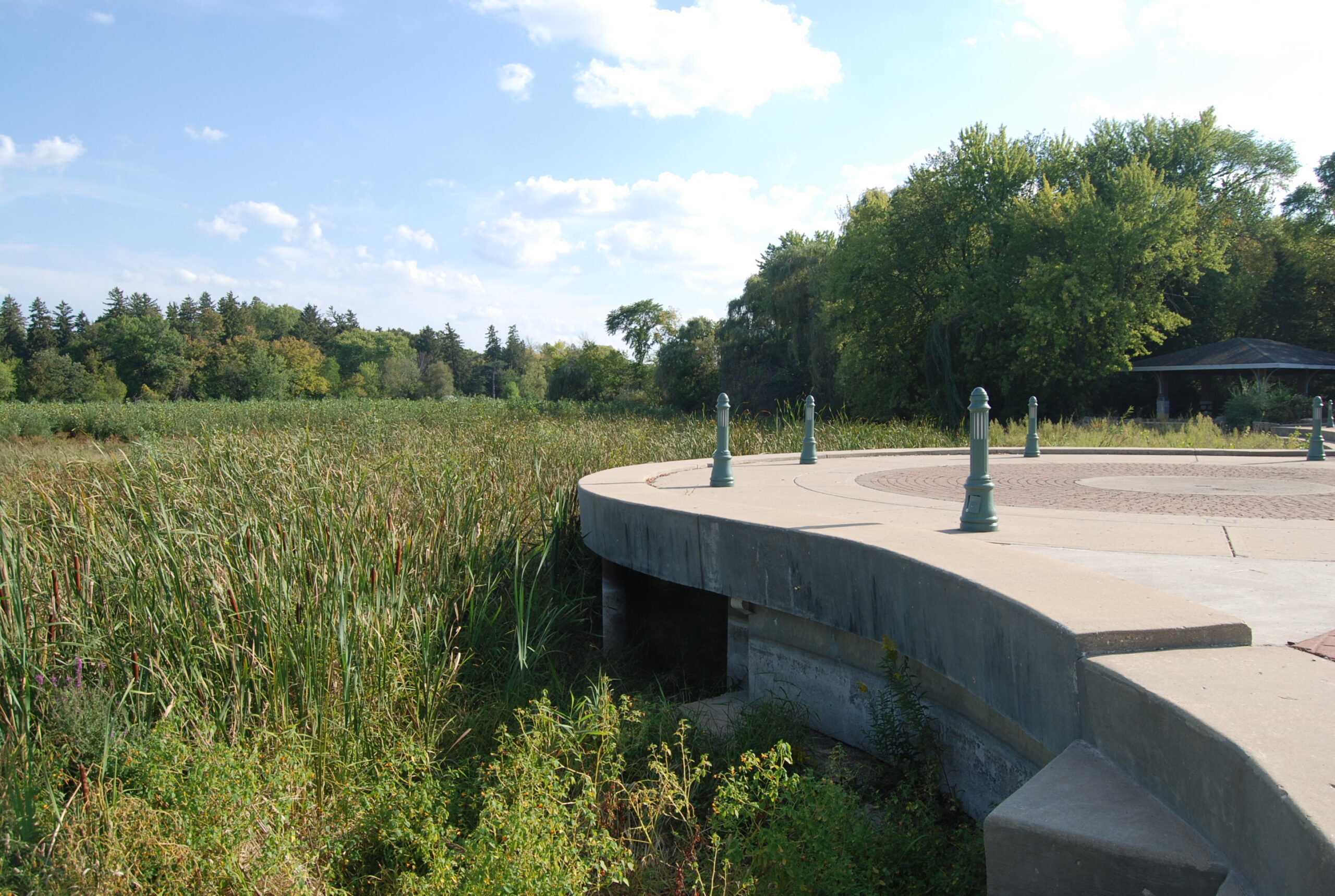By Kim McDarison
Herbicide application on some 103 acres of Cravath and Trippe lakebed that has become overtaken by vegetation is anticipated to take place sometime in October, according to Whitewater Parks and Recreation Director Eric Boettcher.
While information posted in August in the city’s paper of record, the Whitewater Register, noted that application of the herbicide would take place between late August and early September, Boettcher said, confusion with the city’s chemical control permit application, which, he said, initially described the area to be treated as a prairie or wetlands, resulted in a need to resubmit the application, properly identifying the area as a lake.
“We are redoing the application and should be spraying sometime between next week and the 31st of October,” he said, adding chemically treating the lake beds would most likely take place around mid-October.
In a followup interview, Wisconsin Department of Natural Resources Lakes Biologist Heidi Bunk noted that the city had recently applied for a permit to chemically treat emergent vegetation growing on the connected beds of Cravath and Trippe lakes.
According to Bunk, drawdown for the lakes was initiated in June of 2020 and the lakes will remain drawn down until next May.
The city’s application for a permit to chemically treat the area is on hold for two reasons, Bunk wrote in a recent email: “1) The original public notice in the paper stated that the project would be completed by now; and 2) The city is in the process of sending a copy of the application to each riparian owner on the lake as required by NR 107. The city has published a new public notice in the paper and I am waiting for the affidavit. The city will send a copy of the application either by mail or by email to each riparian owner,” she added.
Further, she wrote: “Based on the interest this action has generated, the city has decided to hold a public meeting. This is not an action that the department is requiring.”
As of Sept. 29, Bunk wrote, the city had not yet set the date for the upcoming public meeting.
According to Bunk, the city plans to invite its contractor to the public meeting to answer any questions the public may have.
“The main concern expressed by citizens is that they don’t want their properties to receive either direct treatment or overspray,” Bunk wrote, adding, “the city is only treating below the ordinary high water mark and will not be treating upland property.”
According to a DNR “worksheet for large-scale aquatic plant treatment,” submitted by the city with the department on Aug. 26, Cravath and Trippe lakes will be treated to eradicate growth, which the document stated, was caused by “runoff from fertilized lawns near the lake.”
The document further notes that the city is looking to “remove 100% of the plants in the treatment area, outlining the city’s plans to chemically treat the area one time for the removal of “other plants,” and one time for algae.
Among solutions to vegetation control, the document notes that the city plans to “develop a lake plant management plan,” and “develop a lake protection plan.”
Among steps toward management and protection plans, the document lists the lakes drawdown and rehabilitation project which is currently underway.
The document states that a public informational meeting on the proposed chemical treatment plan was not required as outlined in state statute.
The document submitted to the DNR further notes that a total of just under 104 acres will be treated, with the goal of controlling invasive exotics and removing cattail and other woody plant species from the lakes’ shallow areas to improve recreational use.
Another document submitted to the DNR, titled: “Aquatic Plant Management,” notes that Cottage Grove-based Field & Stream Restorations will be applying the chemical to the designated property.
The document further states that there will be no “uncontrolled surface water discharge” associated with the project.
The chemical which will be used, according to the document, is “Roundup Custom for Aquatic & Terrestrial Use,” to be applied using a “broadcast” method.
The document provides a list of other methods that could be employed for controlling plants other than the use of herbicides. Responding to the checklist, the city noted that the problem could not be addressed through the use of mechanical harvesting, writing, “this will not completely remove established plants.” The city noted that solutions such as manual removal, sediment screens or covers, nutrient control in the watershed, and dredging would not bring the desired effect because the “area (is) too large.” Responding to the solution of waterbody drawdown, the city noted that “the lakes are currently drawn down and it has not removed the vegetation.”
The permit requested by the city is a type granted to address aquatic plants, algae and bacteria for not more than one year.
A permit fee of $1,250 was charged by the DNR.
The full documents as submitted by the city to the DNR are here: https://permits.dnr.wi.gov/water/SitePages/DocSetView.aspx?DocSet=AP-IP-SE-2021-65-X08-27T16-57-04&Loc=undefined.

A view of the vegetation which now fills Cravath Lake. Plans to weaken the vegetation using herbicide are in progress. A public meeting about the process is set to be scheduled soon, according to the Wisconsin Department of Natural Resources. Application of the herbicide is anticipated to take place mid-October, according to city officials.
File photo/Kim McDarison
This post has already been read 38120 times!
